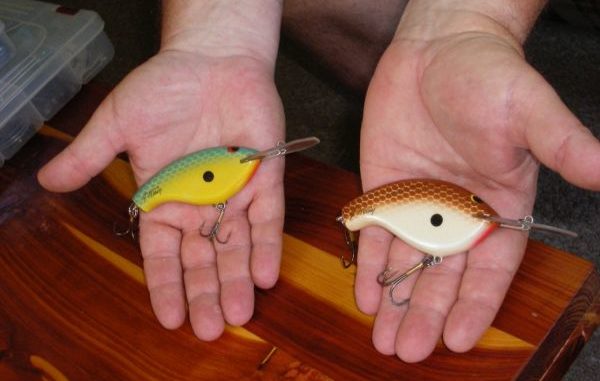
Fishermen should be as demanding as professional baseball players in choosing their lumber for their sport.
Baseball bats must meet certain standards, and wooden baits should reflect skilled labor — especially when they cost anywhere from $15 to $25 per bait.
Getting your money’s worth from hand-carved baits involves selecting the right wood and scrutinizing its components.
Here are some considerations:
• Casting distance/durability — Most wooden lures are carved from balsa wood, and with good reason. Balsa wood is readily available, soft, easy to carve and buoyant.
And, after bumping an object, balsa baits often trigger strikes with their quick rise.
But balsa baits won’t cast as far as hardwood baits, and they’re impeded by brisk winds. They’re also easily damaged if tossed against a bridge abutment or rock.
Hardwood baits are durable and cast easily, even into the wind.
Many carvers avoid hardwoods because carving the material is like cutting into steel.
But if you’re looking for a lure that rises slowly, hardwood is the best bet.
So select the wood that meets your needs.
• Tracking — Spending $25 on a wooden bait that does cartwheels is exasperating. It’s a fact that wooden baits have more tracking problems than plastic baits because of subtle differences in their shape and weight.
And no two wooden baits are exactly alike. So wooden baits require fine-tuning.
Line ties must line up precisely with front and rear hook hangers, and must remain tight to make the baits run true.
So look for line ties that make fine-tuning easy; line ties can be so embedded into plastic lips or positioned so snug to the noses of baits that even needle-nosed pliers can’t grasp them.
Those with wire extensions might ream out the surrounding plastic, creating loose play or a jag in different directions. These baits may defy fine-tuning.
Those baits with extended line ties that are accessible to pliers are your best bets.
• Lip — The lip of a wooden bait determines its wobble, depth and deflection capabilities.
An improperly set lip adversely affects tracking, depth and fine-tuning. Quality baits use polycarbonate or circuit board lips instead of regular plastic lips.
And don’t “shave” a lip with a pocket knife; whittling can weaken, distort or crack a lip.
Instead, gently file a roughened lip after fishing. Repeat this process for a smooth lip that will cut through water.
• Paint — The sealing and painting process varies with lure makers. Paints that crack or peel after normal use are signs of shortcuts in the painting process or inferior materials.
• Hooks — Look for sturdy, snug-fitting wire hook hangers. Screw-in hangers are often soft and can break upon twisting the hook.
Change hooks with care. Different-sized hooks can affect the action and buoyancy of a bait.
• Guarantee — Most wooden lure makers take pride in their craft and guarantee their workmanship. If a bait malfunctions, return it and politely explain the nature of the problem.


